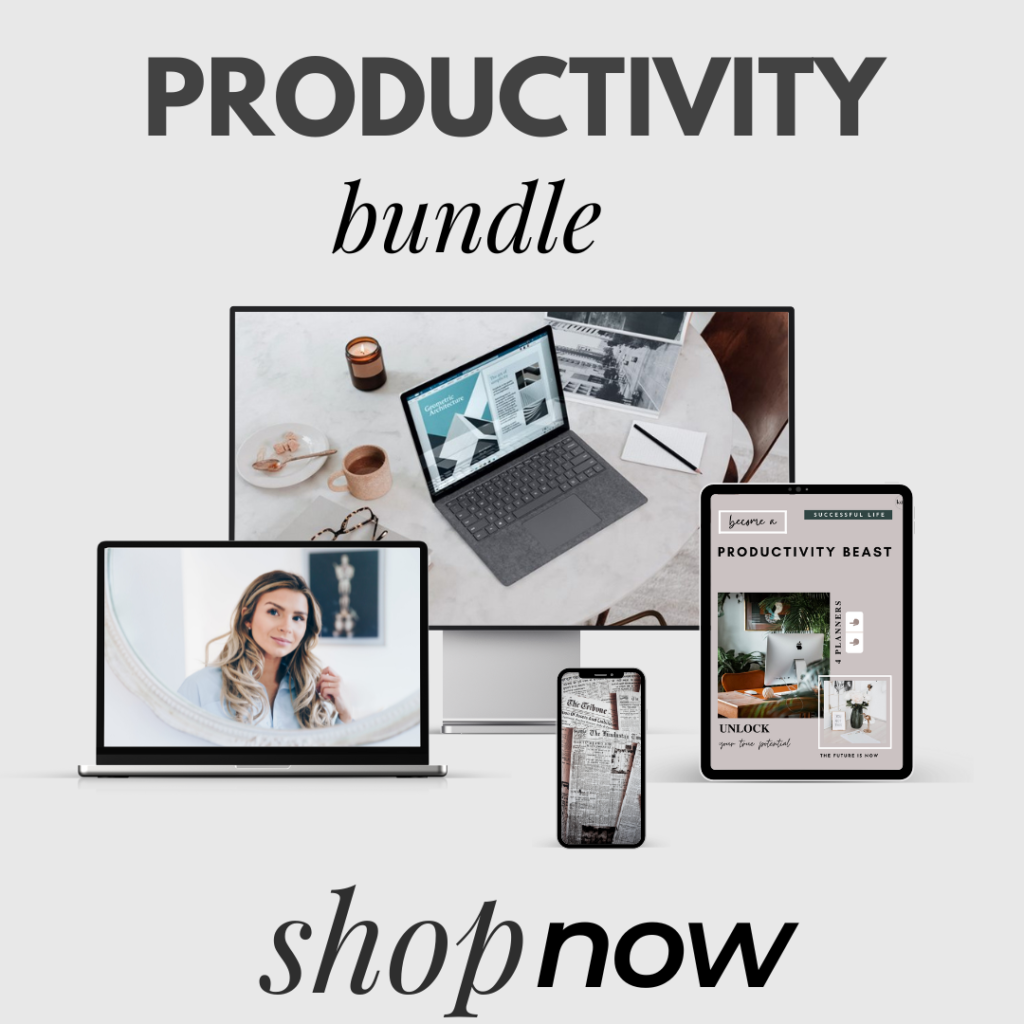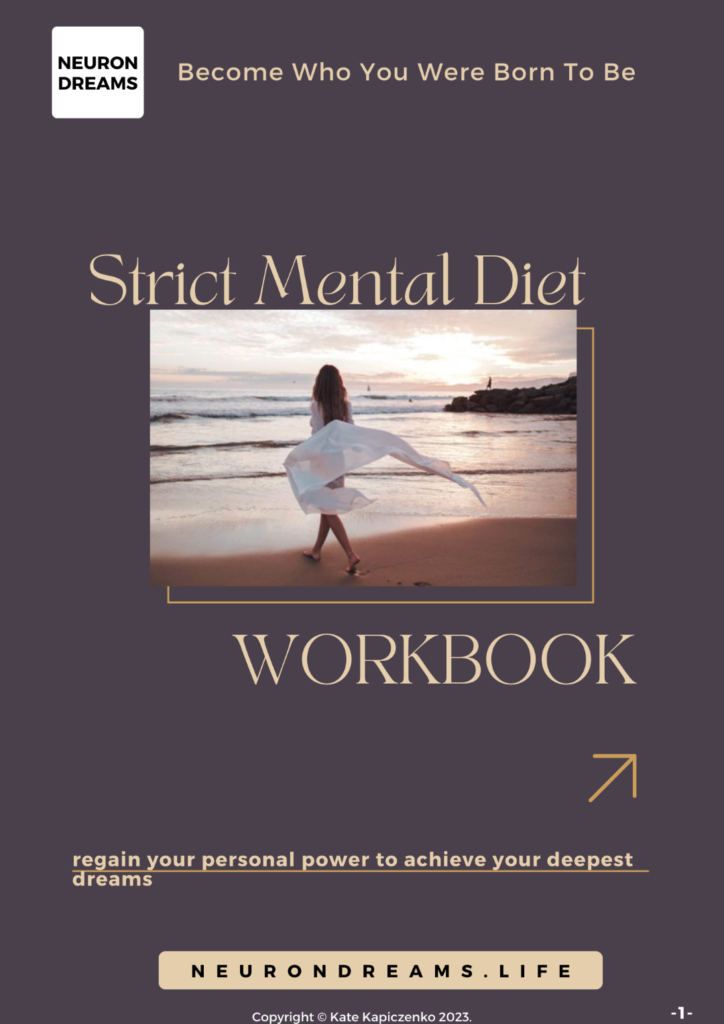Table of Contents
It's Not Magic, It's Commitment
Your financial situation will not magically improve only because you want it. To make it happen you need to create a well-designed financial plan, set financial goals and make a consistent effort towards achieving them, one after another. And to help you will all of that, here are 11 ways to improve your financial life today!
PS. Grab your FREEBIES!
1. Set A Budget & Stick to it
Budgeting is a fancy term for developing a strategic plan for your money, which aims to help you track your income and expenses so you can live a financially stable life and achieve your financial goals faster. Without such a plan, your money will be gone without you even noticing it. Because that’s what happens when there’s nothing and no one who keeps you accountable.
Setting a budget is like having an accountability buddy that holds you accountable making sure that you manage your money the right way. It helps you to stay on top of your finances, organize your spending and master your good money habits so you can sleep peacefully.
And the best part is, creating an effective and stress-free budget is quite simple, even if you’ve never done it before. There are many different budgeting tools and apps (free and paid) designed to make the whole process a lot easier.
Grab A Budget Template HERE (excel document)
Best Financial & Budgeting Apps In 2021
- Qapital here – Banking designed with your goals in mind
- Wally here – professional expense report app
- Mint here – saving and budgeting app
- Digit here – saving app
- Every Dollar here – budget tool and expense tracker
- Acorns here – saving and budgeting app
- You Need a Budget here – create a budget within your actual income
- Prism Bills&Money here – organizing and paying bills app
- Bill Watch here – managing, organizing and reminding bills payment app
- Albert here – saving, budgeting and paying a debt app
- Tycoon here – Freelancers app
- Personal Capital here – investment optimization app
- PocketGuard here – extra money spending app here – categorizes and organizes your expenses, monthly bills, and subscriptions
- Travel Wallet iOS / Android – travel budget and expense app
Free Budget Categories Worksheet
2. Avoid Falling Into The Lifestyle Inflation Trap
Lifestyle inflation also called lifestyle creep refers to the phenomenon when spending increases as an individual’s income goes up. Suddenly, non-essential items are perceived as basic needs such as a new car, bigger apartment, luxury goods. In other words, needs are confused with wants and people instead of increasing their savings and investing in assets, spend more and more on liabilities. In consequence, building lasting wealth become impossible.
At first glance, it seems harmless. But lifestyle inflation is a trap of thinking that the more you earn the more you should spend on living expenses. That is simply untrue, because how can you improve your financial situation if you spend money like there’s no tomorrow? The answer is: you cannot. That’s why there are so many people who have a well-paid job and still, they are constantly broke or in debt.
As there’s nothing wrong in seeking to improve standards of living as an individual’s income goes up, money isn’t just for spending. Money, if used wisely become a powerful tool for reaching your goals and building a financially stable future.
3. Increase Your Financial Literacy
Financial education is the best investment you can make because your whole future depends on it. And remember that you don’t need to be an accounting nerd to be on top of your finances. All you need to do is to find the right people and surround yourself with great financial information that will help you to make the right financial decisions starting from today. So instead of leaving your financial performance to fate, take a proactive approach and get educated.
Take advantage of the Informational Era we live in and start increasing your financial literacy without leaving your home the easy way, via the Internet. Read, listen, watch high-quality content on personal finances and start applying what you’ve learned to not only improve your financial wellbeing but also to avoid financial problems that you had in the past.
- Personal Finance Books
- Rich Dad Poor Dad by Robert Kiyosaki
- Rich Dad’s CASHFLOW Quadrant: Rich Dad’s Guide to Financial Freedom by Robert T. Kiyosaki
- The Richest Man in Babylon Paperback by George S. Clason
- The Bogleheads’ Guide to Investing by Mel Lindauer
- The intelligent investor by Brando Graham
- Think and Grow Rich: The Landmark Bestseller Now Revised and Updated for the 21st Century by Napoleon Hill
- Magic of Thinking Big by David J. Schwartz
- Your Money or Your Life: 9 Steps to Transforming Your Relationship with Money by Vicki Robin
- You Are a Badass at Making Money: Master the Mindset of Wealth by Jen Sincero
- The Total Money Makeover Workbook by Dave Ramsey
- The 4-Hour Work Week: Escape the 9-5, Live Anywhere and Join the New Rich by Tim Ferriss
- The Millionaire Next Door: The Surprising Secrets of America’s Wealthy by Thomas J. Stanley
- I Will Teach You to Be Rich, Second Edition: No Guilt. No Excuses. No BS. Just a 6-Week Program That Works by Ramit Sethi
- The Total Money Makeover: Classic Edition: A Proven Plan for Financial Fitness by Dave Ramsey
- Start Your Own Corporation: Why the Rich Own Their Own Companies and Everyone Else Works for Them by Garrett Sutton
- Youtube Channels
- Bloomberg TV Markets and Finance
- MoneyTalks News
- GoldSilver (w/ Mike Maloney)
- Bigger Pockets
- The Financial Diet
- SeedTime Money
- Podcasts
- Financial Times – Banking Weekly
- Morgan Stanley Ideas Podcast
- Bloomberg Masters in Business Podcast
- Bloomberg P&L
- Exchanges at Goldman Sachs
- Financial Times News Briefing
- Financial Modeling Podcast
- Motley Fool Money
- Blogs on Business & Personal Finance
- Financial Samurai
- I Will Teach You to Be Rich
- Business Insider
- Real-Time Economics
- Freakonomics
- The Consumerist
- Calculated Risk
- The Conscience of a Liberal
- Board games
- Cashflow
- Monopoly
4. Prepare For The Future
As we begin to move past what was a challenging year for all of us, I am thinking a lot about preparedness – how I can be more prepared for the unexpected.
Preparing for a future looks a bit different for everyone.
Imagine if you had the tools to prepare for your future, to find your financial stride, and leave the stress of financial worries behind?
That’s why I am so excited about this collection of resources to meet you wherever you are in your journey for financial wellness.
It’s called The Master Your Money Super Bundle and it was created and curated by people who have learned how to manage their finances and thrive (without large inheritances or winning the lottery). And they’ve brought it back for just 2 days.
While their incomes and expenses are all over the spectrum, you can count on real-life, money-saving strategies from people who know what it’s like to live in expensive areas, or have large families, or enjoy the little extras (even on a tight budget).
They want to help you pay off debt, create a budget for REAL life, and reach your financial goals.
When you buy the Master Your Money Super Bundle you’ll get access to:
- 9 eBooks
- 27 eCourses
- 15 Printables
- 6 BONUSES worth $454.95
This curated collection of 51 resources for $67 to help you:
- Set up an easy budgeting system you can actually stick with
- Learn proven ways to save money no matter your income
- Take control of debt without feeling overwhelmed
- Find smart ways to grow your family’s income
- Create a clear plan for achieving your financial goals
P.S. The bundle sale is over after tonight! It’s your last chance to grab this collection of financial resources for 97% off!
This flash sale will only be available until tomorrow at midnight. You really don’t want to miss out.
Check out the Master Your Money Super Bundle right here
5. Set SMART Financial Goals
Setting clear financial goals means taking full responsibility for your financial life and being mentally prepared to challenge yourself to achieve the desired results.
This process of setting clear financial goals will not only help you to redirect your focus on what’s truly important and what should be done in order to improve your financial life but also will help you to regain full control over your personal finance.
- Think about SMART financial goals you could set for yourself today
- Prioritize & Simplify (to develop laser-like focus)
- Get super clear on your financial goals
- Write your financial goals down
- Map Up the Actions you Need to Take
- Break the big financial goal into small achievable steps to avoid being overwhelmed
- Approach every goal systematically
- Track your progress
- Plan for Obstacles in Advance (what are your fears?)
- Imagine a worst-case scenario (think about what can go wrong and prepare yourself)
- Set Up Your Environment to Naturally Breed your Financial Goals
- Surround yourself with like-minded people that will support you and motivate you in your journey to achieving your financial goals
”You are the average of the five people you spend the most time with.” – Jim Rohn
- Be proactive and create opportunities to meet your goals
- Consider apps for saving and budgeting
- Put your Financial Goals into Autopilot
- Create habits that push you towards your financial goals
- Decide what percentage (at least 20%) of your income should go towards savings every single month
- Automate Your Savings – set up an automatic deposit for your savings account from a checking account or another deposit account
- Practice self-discipline and self-control
6. Build Good Money Habits
GOOD Money Habits – help you to build lasting wealth and reach financial freedom
BAD Money Habits – prevent you from reaching financial independence and achieving your financial goals
The money habits you have ultimately determine who you become and whether you will end up rich or poor. That’s why it is so important to recognize bad money habits early on so that you can easily replace them with good money habits that will help you reach financial independence and build lasting wealth.
7. Side Hustle
The Internet has made starting and cultivating a side hustle easier, fun and pretty enjoyable. The online world offers almost endless possibilities for you to just sit at home and earn some extra money during your free time. All you have to do is to choose how and when you’re going to earn money outside of your full-time job.
If you are a bit indecisive about what side hustle would be best for you, just ask yourself these questions:
- can I turn my passion into profit?
- do I have a hobby that I could easily monetize?
- can I sell my expertise online as a product?
and if your answer is yes to any of these questions, then you can choose at least one of the options below and start your side hustle today!
- Create an online course or webinar
- Sell technical services on Fiverr or Upwork
- Sell homemade or digital products on Etsy
- Start blogging
- Become a Virtual Assistant
- Build a sales funnel with ClickFunnels
- Write an ebook
- Sell your clutter
4 Products On Creating Side Hustle In The Money Bundle
- 25 Ways To Side Hustle to Success (eBook) by Kristin Larsen $9.99
Grab this list of side hustles you can do in your spare time. - How to Make an Extra $1,000 per Month for Your Family… Sharing What You Already Know Online (eCourse) by Dustin & Bethany Riechmann $29.00
Learn how to start a simple online business that will bless your family with extra freedom, fun & money. - Side Business Starter Kit: 10 Simple Side Business Ideas (eBook) by Jen Smith $27.00
You don’t need to be an entrepreneur or quit your full-time job to have a sustainable side business. Get over your fears and start gaining income freedom in five steps. - Side Hustles That Work (eCourse) by Caroline Vencil $97.00
Do what you love and make more than you knew you could.
8. Pay Yourself First
Paying yourself first simply means that before you pay your bills, buy groceries or buy that one item from the Amazon cart that has been there for about a month, you set aside a portion of your income (ideally 20%) to saving. In other words, the first thing you should do after receiving the paycheck is to transfer a portion of your income into your savings account.
This simple financial strategy is an effective tool in prioritizing your saving, building up a nest egg to secure your future, increasing your emergency fund, and of course, developing solid self-discipline so much needed in building long-lasting wealth. Yet most people still pay themselves last making other people rich by paying for their products or services first. Don’t be one of those people. Start prioritizing savings and build a better future today.
9. Create An Emergeny Fund
An emergency fund is a bank account with money set aside to cover LARGE unexpected expenses such as unforeseen medical expenses, major car repairs, or loss of a job due to health problems or economic crises. This financial buffer can keep you afloat in a time of need without having to rely on credit cards, take out high-interest loans or ask your family to borrow money.
2020 has made it very clear that negative financial events are completely out of our control and always strike without warning. That is why having an emergency fund is a must if you want to be financially prepared to cover unexpected costs without the need to ask for a loan. Not to mention that having some money set aside for covering unexpected costs is necessary for maintaining your peace of mind.
Most financial advisors recommend that you have the equivalent of at least 6-9 months worth of fixed expenses (rent, utilities, groceries) in a savings account for emergencies. However, if you don’t already have an emergency fund putting aside that amount of money may not be attainable in a short period of time. But don’t get discouraged. Start small but start now. Every single month put some extra money into a savings account to create and increase your emergency fund. Be consistent and self-disciplined and you will reach your energy fund goal sooner than you ever thought possible.
1.Calculate the total that you want to save
2.Choose a place to keep your emergency fund
- High-Yield Savings Account
- Money Market Account
- Certificates of Deposit
- Roth Individual Retirement Account
- Traditional Bank Account
3.Automate your savings
- Automatically transfer funds to your savings account on a schedule
- Create the habit of saving regularly
4.Save your tax refund
- Deposit some, or all, of your refund into your savings account
5.Use cash-back credit cards
6.Make your savings account untouchable
7.Assess and adjust contributions
- Track your progress
8.Diversify your income streams
- Active (earned) Income
- Passive (business) Income
- Portfolio (investment) Income
Grab Your FREE Worksheets

10. Create A Money Cushion
A cash cushion is a separate fund that is established and set aside solely to be used for the purpose of covering unexpected (relatively SMALL) costs such as medical emergencies, pet emergencies, car repair, home repair or holiday shopping.
Your cushion doesn’t need to be very big. But it has to be a separated fund so that you don’t compromise your emergency fund to cover small unforeseen costs.
1.Cut unnecessary expenses form your budget
2.Save money on your monthly bills
- Unplug your electronics
- Only wash full loads of dishes or clothes
- Turn off lights during the day & use natural light
- Use less hot water Install a digital thermostat (or turn your thermostat down)
- Limit your water usage
- Turn your water heater down
- Change your air filters more often
- Switch light bulbs
- Caulk and weatherstrip windows and doors
- Run your major appliances in off-peak hours
- Cancel subscriptions & memberships that you don’t need anymore
4.Get rid of one hobby that costs you money
5.Monetize your hobby
6.Sell your clutter
- Etsy
- Poshmark
- Marketplace on Facebook
- Amazon – declutter and sell on Amazon
- eBay – declutter and sell on eBay
11. Be Intentional With Your Spending
Ecommerce took consumerism to the next level. Everything you want, need and desire is just one click away. And if you use your credit card when shopping online, the whole buying experience is simple, convenient and almost stress-free.
However, the convenience of not having to leave your home to do all your shopping and paying with a credit card has its cost dangers. Because if you’re not careful with your money you can easily fall into a compulsive shopping trap. And the worst part is, it’s easier than you think. That’s why so many people are struggling with debt.
To avoid deadly spending traps you need to be more intentional with your shopping, draw a clear line between wants and needs simplify your spending. Otherwise, escaping excessive consumerism will become impossible.
- Simplify your spending and be intentional with your shopping
- Buy fair trade products – search for the Fairtrade mark on the packaging of products you buy
- Buty second-hand
- Look for Eco-Friendly Brands
- Switch to sustainable fashion brand
- Adopt Quality over Quantity mindset

Best Posts On Personal Finance:
- 6 Essential Steps To Regain Control Of Your Finances
- 10 Money Habits To Develop Financial Freedom And Success.
- How To Become Money Conscious And Start Saving Money From Scratch
- Mindful Money Management
- Become a More Mindful Shopper and Save Money
- The 5-Step Weekly Routine For Living A Successful And Happy Life.
- Embracing Frugal Lifestyle: 7 Things I Stopped Buying And Start Doing To Save More Money.
- Frugal Living: 20 Practical Tips On How To Save Money But Still Have Fun.
Stay positive, be mindful and start building a financially stable future!
xo Kate




















2 Responses
This is super helpful for us and has a lot of information in it. Your blogs are worth reading it.
Hi! Thank you for your kind words, I really do appreciate it! I’m doing my best to provide high quality, interesting and useful content. I hope you’re doing well. Stay safe and have a wonderful weekend! 😃😉